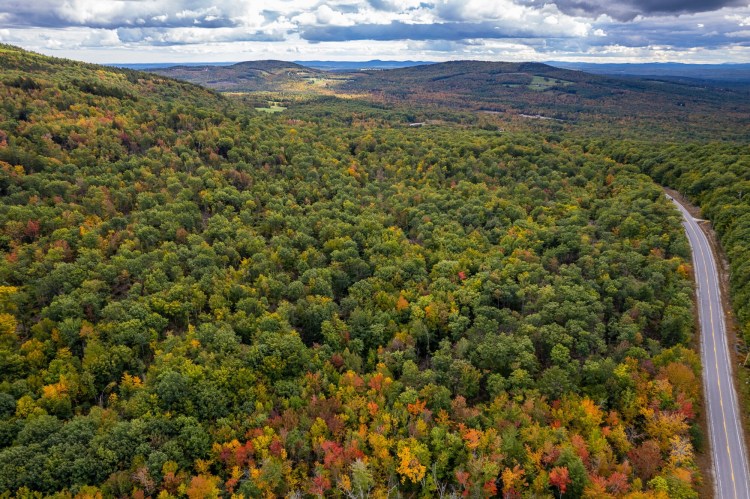Maine is the most forested state in the nation, with almost 90 percent coverage. The forests underpin industry, they store carbon in the fight against climate change, and they support wildlife — from butterflies and bees to birds, deer and many more. Beautiful and useful, our forests can not be taken for granted. They are under constant threat.
Some of those threats you’ve probably already heard about. The emerald ash borer was first detected in Maine in 2018 and has since spread. It is now in seven Maine counties and is spreading most quickly in the southern part of the state.
Spongy moss caterpillars, formerly called gypsy moth, have been vexing the forest industry for more than a century. Browntail moth damages oak trees and its caterpillars cause horribly itchy, and potentially dangerous rashes.
Allison Kanoti, director of forest health and monitoring for the Maine Forest Service, provided an overview of these and other forest threats earlier this month in an online program co-sponsored by Coastal Maine Botanical Gardens and the Maine Landscape and Nursery Association.
Hemlock woolly adelgid has been present in Maine for a couple of decades. The pest made news when in 2021 many dead insects on York County beaches turned people’s feet black. Hemlocks in the state now have a new villain: Elongate hemlock scale. The creature hitched a ride on trees that Mainers bought and later planted in their yards. Although a newcomer to Maine, elongate hemlock scale has already spread into the forest in some counties along the coast. Kanoti said this disease is as dangerous to hemlocks as the adelgid, if not more so.
Another sucking insect that threatens Maine plants is the Spotted Lanternfly. Though egg masses of this highly dangerous pest have been found on plants brought into the state, it has not yet been found in other life stages. Spotted Lanternfly needs tree of heaven (Ailanthus) to reproduce, a tree that is present in Maine. The fly feeds on black walnut, silver and red maples, willow, river birch, black cherry, tulip poplar and others. As Maine’s climate gets warmer, it could become a threat, Kanoti said.
Kanoti touched on wood-boring insects. The wood-boring southern pine beetle has been found in traps, but is not yet a major concern. Others have arrived here in ways you might never guess, she said: “Some have been found on wood furniture ordered from Amazon!”
The bugs aren’t the only problem. A number of diseases also threaten Maine forests. Oak wilt disease, for one, is in nearby states and is moving in our direction. If you are cutting nests of browntail moth out of oaks, be sure to finish the job by the end of March, Kanoti said, because oak wilt becomes active in April and can more easily infect trees with open wounds. Beech leaf disease is already in Maine and has caused some severe damage in coastal areas. Scientists are studying it, hoping to find out how it spreads and how to control it.
With all these pests, is the Maine forest doomed?
Kanoti doesn’t think so.
“Neglected patches are where bad things happen,” she said. She urged Mainers to pay attention to their trees and report any problems they see, so the state can try to address the: Email or call Maine Forest Service Insect and Disease at (207) 287-2431. When much of a forest is destroyed by a pest, some of the trees will survive. Seeds from those resistant trees can be used to plant new forests. In addition, scientists can breed new trees to keep the forests going.
Both of these will take decades, of course.
Tom Atwell is a freelance writer gardening in Cape Elizabeth. He can be contacted at: tomatwell@me.com
Send questions/comments to the editors.



Comments are no longer available on this story